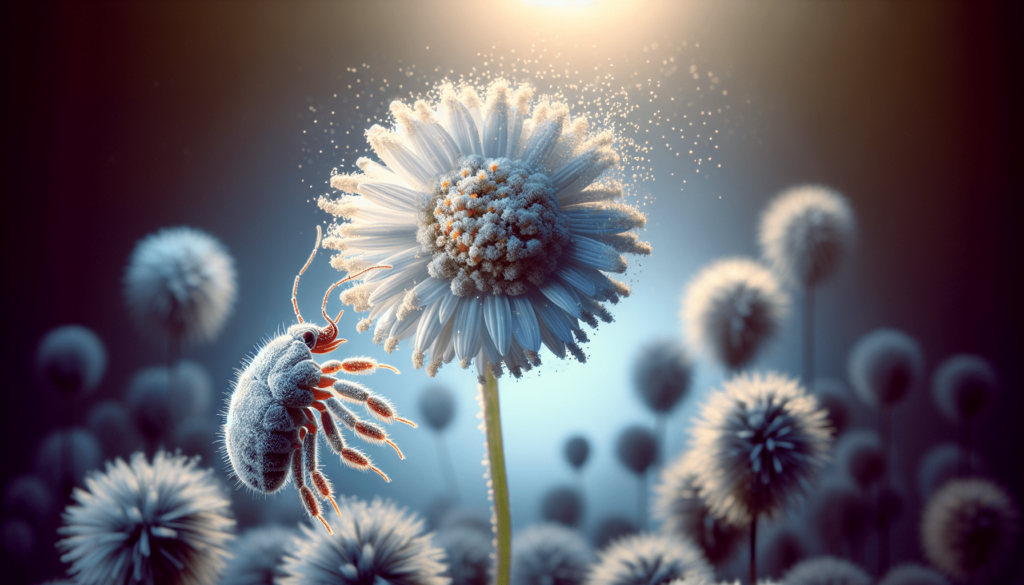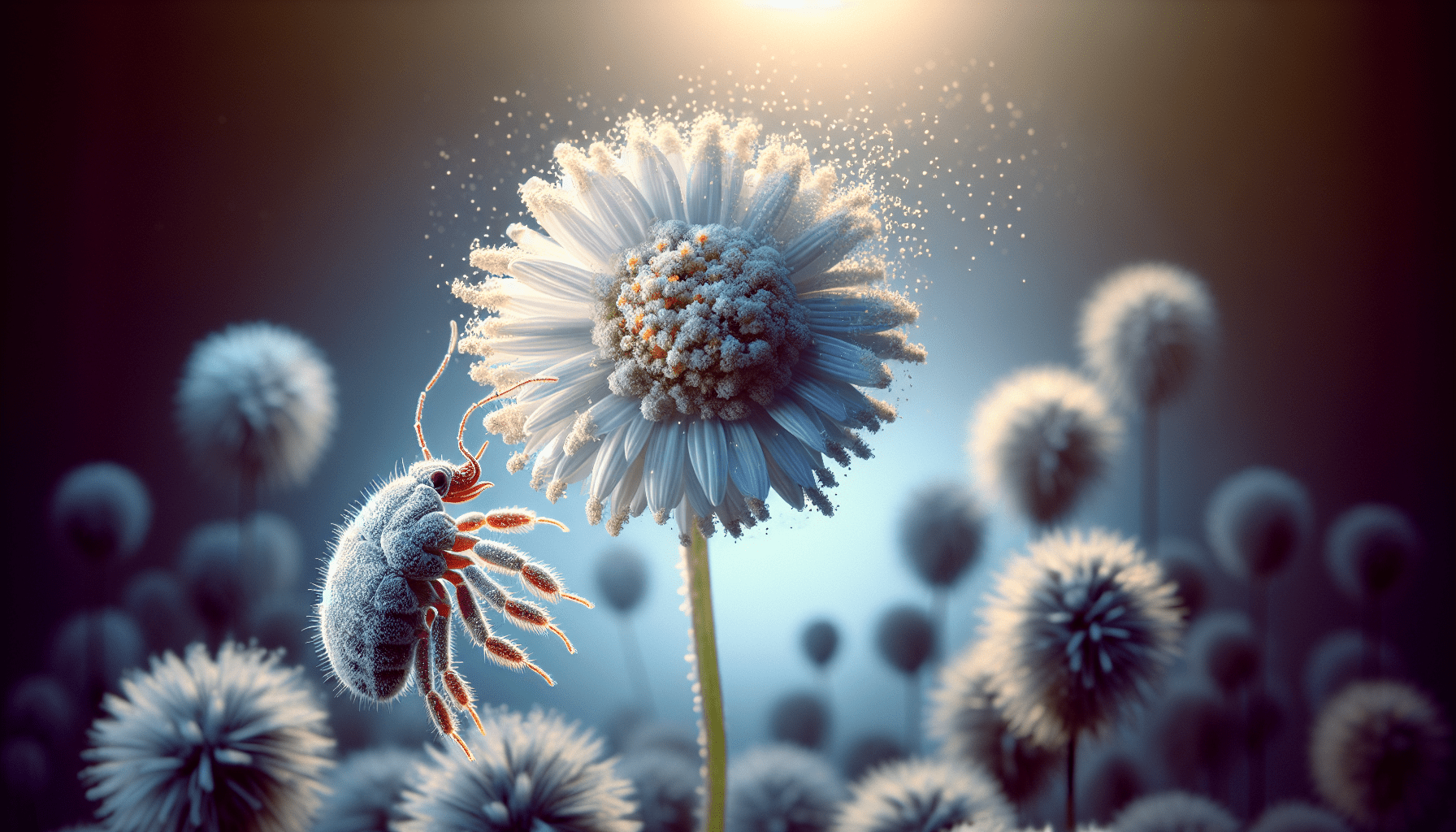In the heart of spring, when flowers bloom and the air is fragrant, you might find yourself sneezing incessantly and wiping away itchy tears. While some allergies plague you seasonally, others seem to follow you through every month of the year. “Seasonal Allergy Vs. Year-Round Allergy: What’s The Difference?” breaks down the distinctions between these two types of allergies. You’ll uncover the unique triggers behind each and gain valuable insights into managing symptoms effectively, ensuring that both your sunny days and cozy winters are as comfortable as possible. Have you ever found yourself sniffling and sneezing at certain times of the year? Or perhaps you’re someone who deals with these symptoms all year long? Whether you experience seasonal allergies or suffer from year-round allergies, understanding the differences between them can help you manage your symptoms more effectively. In this friendly guide, we’ll dive into the comparison between seasonal and year-round allergies to help you better identify and cope with your own allergic reactions.
Understanding Allergies
To begin with, let’s get a clear understanding of what allergies are. Essentially, allergies occur when your immune system reacts to a foreign substance that’s not typically harmful to your body. These substances are known as allergens. For some, this may mean pollen from trees and grasses, while for others, it might be dust mites or pet dander.
Common Symptoms of Allergies
Allergic reactions can manifest in a variety of ways, but some of the most common symptoms include:
- Sneezing
- Runny or stuffy nose
- Itchy or watery eyes
- Itchy throat
- Coughing
- Sinus congestion
- Fatigue
Now that we’ve covered the basics, let’s explore the two main types of allergies: seasonal and year-round (also known as perennial) allergies.
Seasonal Allergies
Seasonal allergies, sometimes referred to as “hay fever” or allergic rhinitis, typically occur during specific times of the year. They’re often triggered by outdoor allergens such as pollen from trees, grasses, and weeds.
Triggers of Seasonal Allergies
Seasonal allergy triggers can vary depending on where you live and what plants are growing in your area. Here are the most common seasonal allergens:
- Tree Pollen: Trees like oak, cedar, birch, and maple release pollen in the spring.
- Grass Pollen: Different types of grasses, such as timothy, Bermuda, and ryegrass, pollinate during late spring and summer.
- Weed Pollen: Weeds like ragweed, sagebrush, and pigweed pollinate in late summer and fall.
- Mold Spores: Mold can grow in outdoor areas with high humidity and can be a trigger during various seasons.
Timeline of Seasonal Allergy Symptoms
The timeline of your symptoms will depend on what type of pollen or mold you are allergic to. Here’s a helpful breakdown:
| Season | Common Allergens | Typical Symptoms |
|---|---|---|
| Spring | Tree pollen | Sneezing, runny nose, itchy eyes |
| Late Spring to Summer | Grass pollen | Sneezing, congestion, cough |
| Late Summer to Fall | Weed pollen, mold spores | Runny nose, itchy throat, headaches |
Managing seasonal allergies often involves avoiding the allergens or taking preventive measures during peak pollen times.
Tips for Managing Seasonal Allergies
Here are some friendly tips to help you manage seasonal allergies:
- Stay Indoors: Try to stay indoors on high pollen days, especially on windy days when pollen counts are the highest.
- Close Windows: Keep windows and doors closed at home and in your car to minimize pollen exposure.
- Shower and Change Clothes: After spending time outside, shower and change your clothes to remove pollen.
- Use Air Purifiers: An air purifier with a HEPA filter can help reduce indoor pollen levels.
Now that we’ve covered the seasonal side of things, let’s move on to year-round allergies.

Year-Round Allergies
Year-round or perennial allergies occur throughout the year and are usually triggered by indoor allergens. Common allergens include dust mites, pet dander, mold, and cockroach droppings.
Triggers of Year-Round Allergies
Let’s break down the most prevalent triggers of perennial allergies:
- Dust Mites: Tiny insect-like pests that live in household dust and thrive in bedding, upholstery, and carpets.
- Pet Dander: Microscopic flecks of skin shed by cats, dogs, and other furry pets.
- Mold Spores: Mold can grow indoors in damp areas like bathrooms, kitchens, and basements.
- Cockroach Droppings: Proteins found in cockroach droppings, saliva, and body parts can cause allergic reactions.
Persistent Symptoms of Year-Round Allergies
Because perennial allergies are triggered by indoor allergens, symptoms can persist throughout the year. Here’s a summary of typical symptoms experienced:
| Trigger | Common Areas | Typical Symptoms |
|---|---|---|
| Dust Mites | Bedding, furniture, carpets | Congestion, sneezing, runny nose |
| Pet Dander | Anywhere pets roam | Itchy eyes, rashes, sneezing |
| Mold Spores | Damp areas | Coughing, wheezing, itchy skin |
| Cockroach Droppings | Kitchens, bathrooms | Runny nose, itchy eyes, skin rashes |
Managing perennial allergies involves more than just removing the allergen; it often requires a holistic approach to keeping indoor air quality high and environments clean.
Tips for Managing Year-Round Allergies
To help you manage year-round allergies, here are some practical tips:
- Regular Cleaning: Dust and vacuum regularly using a vacuum with a HEPA filter.
- Bedding Care: Wash bedding in hot water weekly and use dust-mite-proof covers for pillows and mattresses.
- Control Humidity: Use a dehumidifier to keep indoor humidity levels below 50%.
- Pet Management: Bathe and groom pets regularly if you’re allergic to pet dander.
By understanding both types of allergies, you can make informed decisions on how to manage your symptoms effectively. In the next section, we will compare the two, contrasting seasonal and year-round allergies for better clarity.
Comparing Seasonal and Year-Round Allergies
A comparison can help highlight the key differences between seasonal and year-round allergies.
| Feature | Seasonal Allergies | Year-Round Allergies |
|---|---|---|
| Timing | Occur during specific seasons | Persist all year |
| Common Triggers | Tree pollen, grass pollen, weed pollen, mold spores | Dust mites, pet dander, mold, cockroach droppings |
| Location | Primarily outdoor allergens | Mainly indoor allergens |
| Symptom Patterns | Symptoms coincide with high pollen counts | Symptoms persistent or sporadic based on exposure |
| Management Focus | Seasonal avoidance and medication | Continuous allergen control indoors |
Understanding these differences will help you take the right steps toward managing your specific type of allergy. But what if you’re not sure which type you’re dealing with? Let’s explore how you can diagnose and differentiate between them.

Diagnosing and Differentiating Between Allergies
To effectively manage your allergies, it’s essential to know exactly what you’re allergic to. Here’s how you can go about diagnosing and differentiating between seasonal and perennial allergies:
When to See an Allergist
If your symptoms are persistent or severe, it might be a good idea to consult with an allergist. Some signs you may need professional help include:
- Over-the-counter medications not providing relief
- Uncertainty about what triggers your symptoms
- Allergy symptoms affecting daily life
Allergy Testing Methods
An allergist can perform several tests to identify specific allergens responsible for your symptoms:
- Skin Prick Test: Small amounts of allergens are applied to your skin using tiny pricks; a reaction suggests an allergy.
- Blood Test: Measures the amount of immunoglobulin E (IgE) antibodies in your blood to various allergens.
- Patch Test: Helps diagnose contact allergens by applying patches to your skin for a specified period.
Keeping a Symptom Diary
One practical and proactive step you can take is to keep a diary of your symptoms. Note the following:
- Time and date when symptoms occur
- What activities you were doing
- Whether you were indoors or outdoors
- Any noticeable improvement or worsening of symptoms
This information can be incredibly useful for your allergist to pinpoint what you’re allergic to.
Treatment Options for Allergies
Once you’ve identified your allergens, the next step is managing and treating your symptoms. Here are some common treatment options:
Over-the-Counter Medications
Several over-the-counter options are available for managing allergy symptoms that can provide quick relief:
- Antihistamines: Reduce symptoms like sneezing, itching, and runny nose (e.g., Claritin, Zyrtec).
- Decongestants: Help relieve nasal congestion (e.g., Sudafed).
- Nasal Sprays: Include saline sprays for moistening nasal passages and steroid sprays for reducing inflammation (e.g., Flonase, Nasonex).
Prescription Medications
In severe cases, an allergist may prescribe medications:
- Stronger Antihistamines: Sometimes a more potent antihistamine is needed.
- Leukotriene Receptor Antagonists: Medications like Singulair block leukotrienes, which cause allergy symptoms.
- Immunotherapy: Allergy shots or tablets that build up your tolerance to allergens over time.
Home Remedies and Lifestyle Changes
In addition to medications, some home remedies and lifestyle modifications can be quite beneficial:
- Saline Nasal Irrigation: Using a saline solution to rinse nasal passages helps reduce congestion.
- Neti Pot: A device that introduces saline solution into one nostril and out the other, clearing nasal passages.
- Diet: Certain foods like honey might help reduce symptoms of pollen allergies, though scientific evidence is limited.
Long-term Management Strategies
Addressing allergies often requires ongoing strategies, particularly for year-round allergies. Here are some tips to keep allergies at bay over the long term:
Environmental Control
Making some changes in your home can go a long way:
- Use Allergen-Reducing Products: Choose bedding, pillows, and mattresses that are designed to reduce allergens.
- Laundry Habits: Wash clothes, especially those worn outdoors, regularly to remove pollen.
- Vacuum Frequently: Use a vacuum with a HEPA filter to trap allergens.
Monitoring Weather and Pollen Counts
For those with seasonal allergies, keeping an eye on weather forecasts and pollen counts can help you avoid flare-ups:
- Pollen Apps: Use apps or websites to check daily pollen levels.
- Weather Reports: Some weather services provide pollen forecasts.
Staying Informed and Updated
Allergies can change over time, so it’s essential to stay informed about new treatments and management strategies:
- Allergy Alerts: Sign up for alerts from reputable sources to stay updated on high pollen days.
- Regular Check-ups: Periodic visits to your allergist can help manage ongoing symptoms and perhaps even introduce new treatments.
Emotional and Social Impact of Allergies
It’s easy to focus solely on the physical symptoms of allergies, but it’s equally important to acknowledge the emotional and social impacts. Constantly dealing with symptoms can be frustrating and exhausting.
Emotional Reactions
Common emotional reactions to chronic allergies include:
- Stress and Anxiety: Continual discomfort and the need to avoid allergens can lead to stress and anxiety.
- Frustration: Inability to participate in activities or enjoy certain environments can be frustrating.
Social Considerations
Managing allergies can affect your social life:
- Isolation: The need to stay indoors during high pollen seasons or avoid pet-friendly homes can make you feel isolated.
- Stigma: Some people may not understand the severity of allergies and view frequent sneezing or congestion as merely annoying rather than debilitating.
Coping Mechanisms
Here are some ways to cope with the emotional and social aspects of allergies:
- Support Groups: Join online or in-person support groups where you can share experiences and tips.
- Open Communication: Talk to your friends and family about your allergies so they understand your needs and limitations.
- Mental Health Help: Consulting a therapist can provide strategies for dealing with the emotional toll of chronic allergies.
Conclusion
Whether you’re dealing with seasonal allergies influenced by the changing seasons or year-round issues from indoor allergens, understanding the root causes and how they differ is crucial for effective management. Through proper diagnosis, a blend of over-the-counter and prescription medications, preventative measures, and ongoing management strategies, you can significantly reduce your allergy symptoms.
Remember, you’re not alone. Many people experience similar struggles, and with the right information and strategies, you can navigate your allergy journey with greater ease and comfort. Here’s to clearer skies and happier, symptom-free days ahead!
